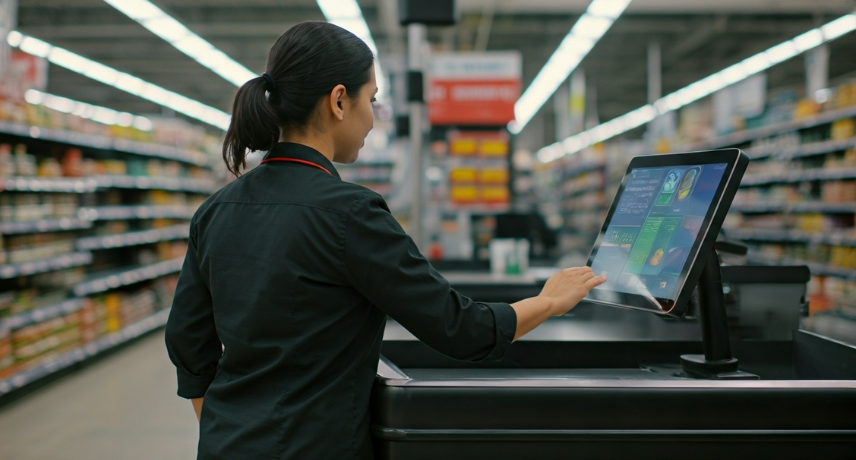
Enquiry Form
Supermarket Software vs Traditional Billing: Which Is Best
Choosing between traditional billing and supermarket billing software is important for any business today. The old way uses manual processes. In this, people do things by hand. Billing software, on the other hand, uses automation. This means the work gets done faster and with fewer mistakes. The billing system is a big part of every store. It helps make sure every customer can buy their stuff without problems.
Supermarket software changes the way this billing process works. It brings new and better options to the table. But the question is, does this work for everyone? In this blog, we look at which way is better for you and why it is important as things change in the world of retail.
Understanding Supermarket Software and Traditional Billing
A billing system is the main part of any retail business. It helps make every sale and payment go smoothly. When supermarkets use updated supermarket software, their billing system gets better. This software adds accounting software that brings in more automation and lets different parts of the system work together. It also means you do not have to enter things by hand as much. All these things make the billing process easier and faster.
Traditional billing, on the other hand, depends a lot on doing things by hand. People have to enter every sale and make each invoice on their own. That takes a lot of time. It can work well for some small stores. But, as the business grows, this way of billing can be tough to keep up. It may not grow as your store grows. There is also a bigger risk of making mistakes in the billing work. Let’s talk more about this.
A. Key Concept of Supermarket Software
Modern supermarket software is an automated billing system that helps businesses get rid of slow manual work. It takes care of the payment processes, entering data, and making invoices. Because of this, businesses do not have to deal with problems caused by old, manual ways. They get fast and mistake-free transactions instead.
This billing system works well for many different business models. It can help both small stores and big supermarket chains because it can be changed to fit what they need.
The software speeds up retail jobs such as creating invoices, checking sales, and keeping track of items. With automation, this billing system not only meets work needs but also follows tax rules like GST.
B. Traditional Billing Method Explained
Classic billing systems demand lots of manual work. Staff members need to record sales in systems through manual input, tally totals, and print or make out receipts. This is labor-intensive and prone to mistakes. They also rely on manual stock counts and stock take records and are easily made worse during busy order times. Late payments, too, and the issuing of client invoices require a lot of labor.
While the classic system may work for a small business with a small number of sales, it becomes ineffective when demand increases. Billing software is necessary in most businesses today to be more efficient and accurate and to ensure growth.
How does automated billing work?
1. Automated systems
An automated billing system makes the workflow easy. It lets the data, invoices, and payments work together with no trouble. The system takes customer details from one main billing platform and creates invoices by itself. After that, the invoices get sent out through digital means, so they reach people fast.
Automated systems also run the whole workflow. They set up reminders for payments, handle the transactions, and make reports. People do not have to spend time chasing late payments because the system sends updates right away. When several pieces of billing data go into one place, businesses get more control over the full billing process. This saves time and hard work.
2. Set up Electronic Invoice
The ability to create electronic invoicing is essential. It brings automation to any business that wants to incorporate it, allows you to work faster, and reduces paperwork. If you are leveraging automation for invoices and billing, you do not have to enter the details over and over again. This significantly decreases the potential for errors and saves tons of time.
Take advantage of pre-made templates to give every invoice a professional and consistent appearance without spending a huge amount of time on it.
In other cases, you can just let the electronic invoicing system enter pertinent information like numbers, due dates, taxes etc. This keeps your bills correct and follows all the rules.
3. Schedule Billing reminder
Automated billing reminders minimize late payments for businesses. It also keeps customers aware when bills are coming up. This type of automation keeps the payments coming in and on time.
- Set reminders for customers via e-mail or SMS when they have payments due.
- Establish regular notifications for late bills. This helps customers pay on time.
Let businesses personalize reminder messages. This makes customers feel more connected and engaged.
Conclusion:
In conclusion, choosing between supermarket software and traditional primitive billing methods can greatly affect ways of running your store and your customer's experience and satisfaction. Supermarket software offers it all, including automation, inventory management, and convenient payment options. You can process more purchases, more accurately, with fewer mistakes faster.
Old-school primitive billing processes can work for you in some applications but won’t always be as accurate or scalable as embracing the right technology and the ability to audit discounts, loyalty rewards, GST compliance, and more. If you want your billing operations to be more convenient and more efficient and don’t have that solution yet, you can always look to supermarket software to serve your needs.